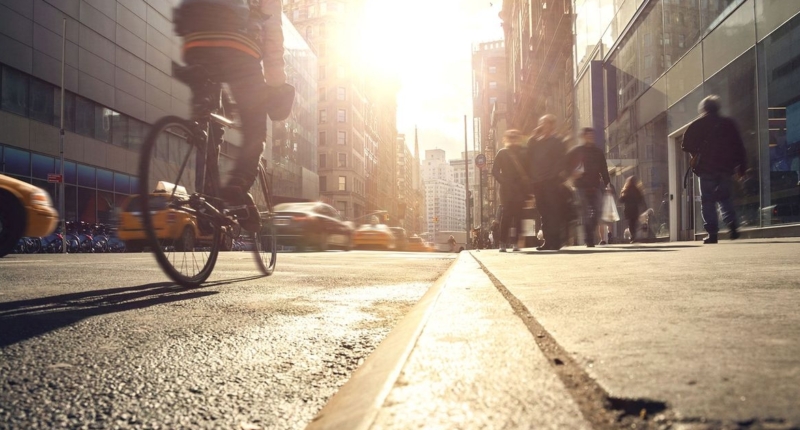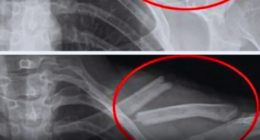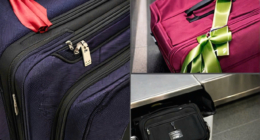The increasing inaccessibility of cars to the non-wealthy in the US has led to a transportation gap that is having a negative impact on the nation’s social fabric. The poorest Americans who cannot afford cars are often cut off from job opportunities, schools, and other services, especially in places where transit service quality is poor. Individuals with physical disabilities, such as those that can accompany autism, are further disadvantaged by the lack of accessible transportation. Policymakers can address this issue by implementing policies that prioritize transit-oriented development, expanding ride-sharing services like Uber and Lyft, and promoting non-car transportation modes such as transit, walking, and bicycling. These policies can benefit individuals with physical disabilities, promote social equity, and contribute to a more sustainable transportation system.
Wealth inequality in America has reached unprecedented levels, with many individuals and families unable to afford to own and operate a car. Unfortunately, this inaccessibility to personal transportation is having a detrimental effect on the nation’s social fabric.
In most parts of the United States, walking, cycling, and ride-sharing services can only pick up so much slack in communities without adequate public transit. Consequently, those who cannot drive are often cut off from fully participating in their community, particularly in suburbanized, car-centric areas. Job opportunities, schools, and other essential services are especially inaccessible to the poorest Americans living in areas with poor transit service quality.
A recent study published in the Transportation Research Part D: Transport and Environment journal analyzed data from the 2017 National Household Travel Survey to assess American transportation habits. The research, conducted by Xize Wang of the National University of Singapore and John L. Renne of Florida Atlantic University, found that although cars are still the most widely used transportation method in the United States, a person’s ability to access a car depends on factors beyond their control, most notably their income.
The study found that among the poorest Americans who cannot afford cars, nearly half of all their trips occur without any form of motorized transportation, while more than a quarter occur using transit. If households earn less than $25,000 per year, each individual within that household will only travel for roughly 15.6 miles per day, compared to the national average of 22.9 miles per day per person.
Furthermore, the study revealed that non-Hispanic Black people rely on transit for 7.6% of all trips compared to 2.1% for non-Hispanic Whites. Transit is particularly crucial for Black residents, who often rely on bus services that have a frequency of one bus per hour in many cities. This makes it difficult for them to access vital services such as jobs, education, and healthcare.
In conclusion, the inaccessibility of cars to low-income Americans is having a severe impact on the nation’s social fabric, as they are cut off from essential services and unable to participate fully in their communities. The findings of the study demonstrate that income plays a significant role in American travel habits, which has implications for addressing inequality and providing adequate transportation options for all.
Policies to Address Transportation Gap in America
The transportation gap in America has worsened due to factors unique in the early 21st century, such as the Great Recession in 2008 and the COVID-19 pandemic in 2020. These events have limited vehicular transportation access, along with the expansion of transit-oriented developments (TOD) in urban America, intergenerational lifestyle changes, increasing fuel prices, the growth of e-commerce, and the ease of shared mobility.
Fortunately, policies can be implemented to address this issue. Ride-sharing services like Uber and Lyft can be expanded to help people access transportation. Policymakers can encourage older adults to use ride-hailing services by thinking of ways to make them more willing to take such services. Wang believes that ride-hailing services have the potential to meet the mobility needs of older adults.
According to Renne, renters rely on transit more than homeowners and also walk more often than homeowners. Therefore, future residential areas should be planned based on citizens’ transportation needs, with apartments prioritized near high-frequency transit nodes, known as transit-oriented development. Encouraging renters to live near transit can benefit both renters and public transit, with more people using the services and buses and trains being fuller.
As policymakers try to address climate change, it will be necessary to de-emphasize the use of cars. Renne predicts a push for more transit, walking, and bicycling as these modes emit significantly lower carbon emissions compared to driving.
In conclusion, policymakers can implement policies that expand ride-sharing services, prioritize transit-oriented development, and encourage non-car transportation modes to address the transportation gap in America. These policies can benefit the mobility of citizens, reduce carbon emissions, and ultimately lead to a more sustainable and equitable transportation system.
Making Transportation Easier for Individuals with Physical Disabilities
According to a recent study, the increasing inaccessibility of cars to the non-wealthy in the US is having a negative impact on the nation’s social fabric. Walking, bicycles, and ride-sharing services can only offer limited mobility in communities without real public transit. The study found that among the poorest Americans who cannot afford cars, nearly half of all their trips occur without any form of motorized transportation, while more than a quarter will occur using transit. Furthermore, individuals with physical disabilities, such as those that can accompany autism, are further disadvantaged by the lack of accessible transportation.
When asked about what can be done to make transportation easier for individuals in situations like this, John L. Renne, one of the researchers behind the study, acknowledged the need to examine data on disability to address the transportation gap. Unfortunately, the study did not analyze the data by specific mobility needs and/or impairment, but Renne hopes to address this issue in the future.
Despite this, policymakers can still implement policies that can benefit individuals with physical disabilities. For instance, ride-sharing services such as Uber and Lyft can be expanded to help people access transportation, including individuals with physical disabilities. Policymakers can also promote policies that prioritize transit-oriented development, which can benefit renters who rely on transit more than homeowners. This would encourage more people to live near transit, and buses and trains will ultimately need less subsidy if more people are using the services.
Additionally, policymakers can encourage the use of non-car transportation modes, such as transit, walking, and bicycling, which emit significantly lower carbon emissions compared to driving. These modes of transportation can also offer benefits for individuals with physical disabilities. For example, walking can improve muscle tone, balance, and coordination, while cycling can improve cardiovascular fitness and overall physical health.
In conclusion, addressing the transportation gap in the US requires a multifaceted approach that includes expanding ride-sharing services, prioritizing transit-oriented development, and promoting non-car transportation modes. Such policies can benefit individuals with physical disabilities, promote social equity, and contribute to a more sustainable transportation system.
Don’t miss interesting posts on Famousbio









